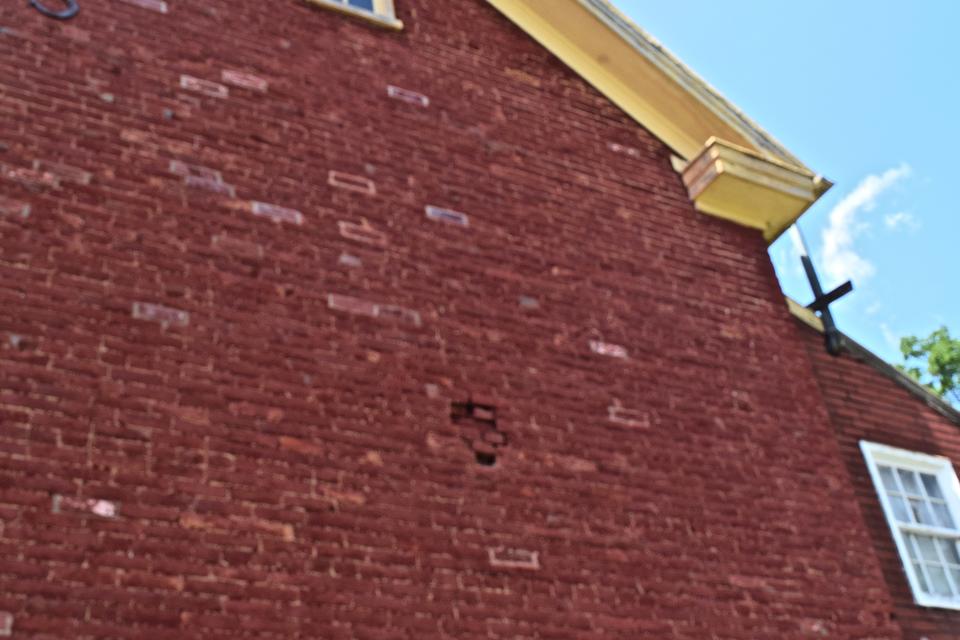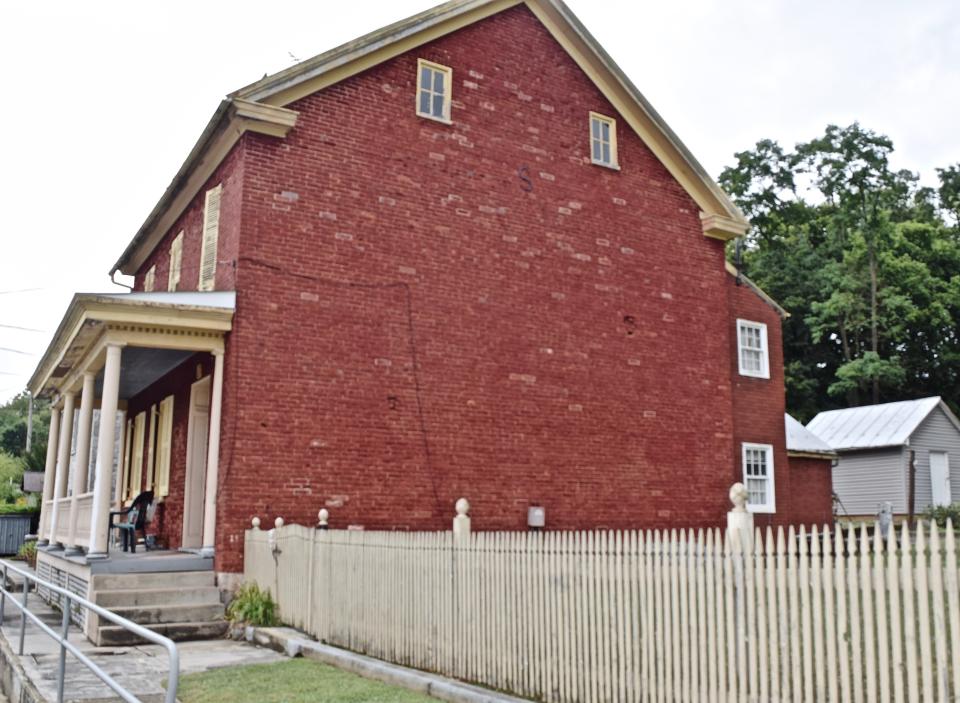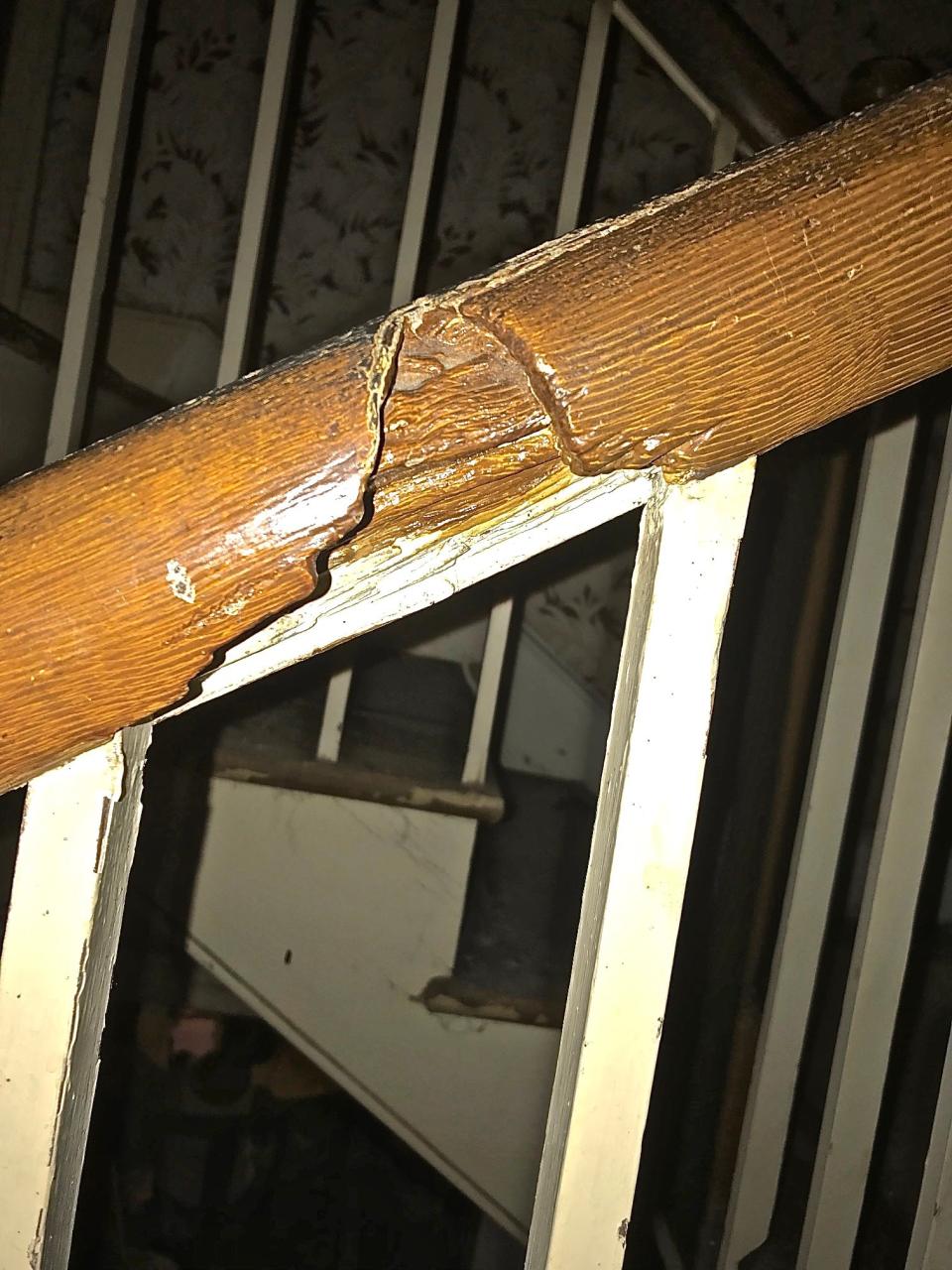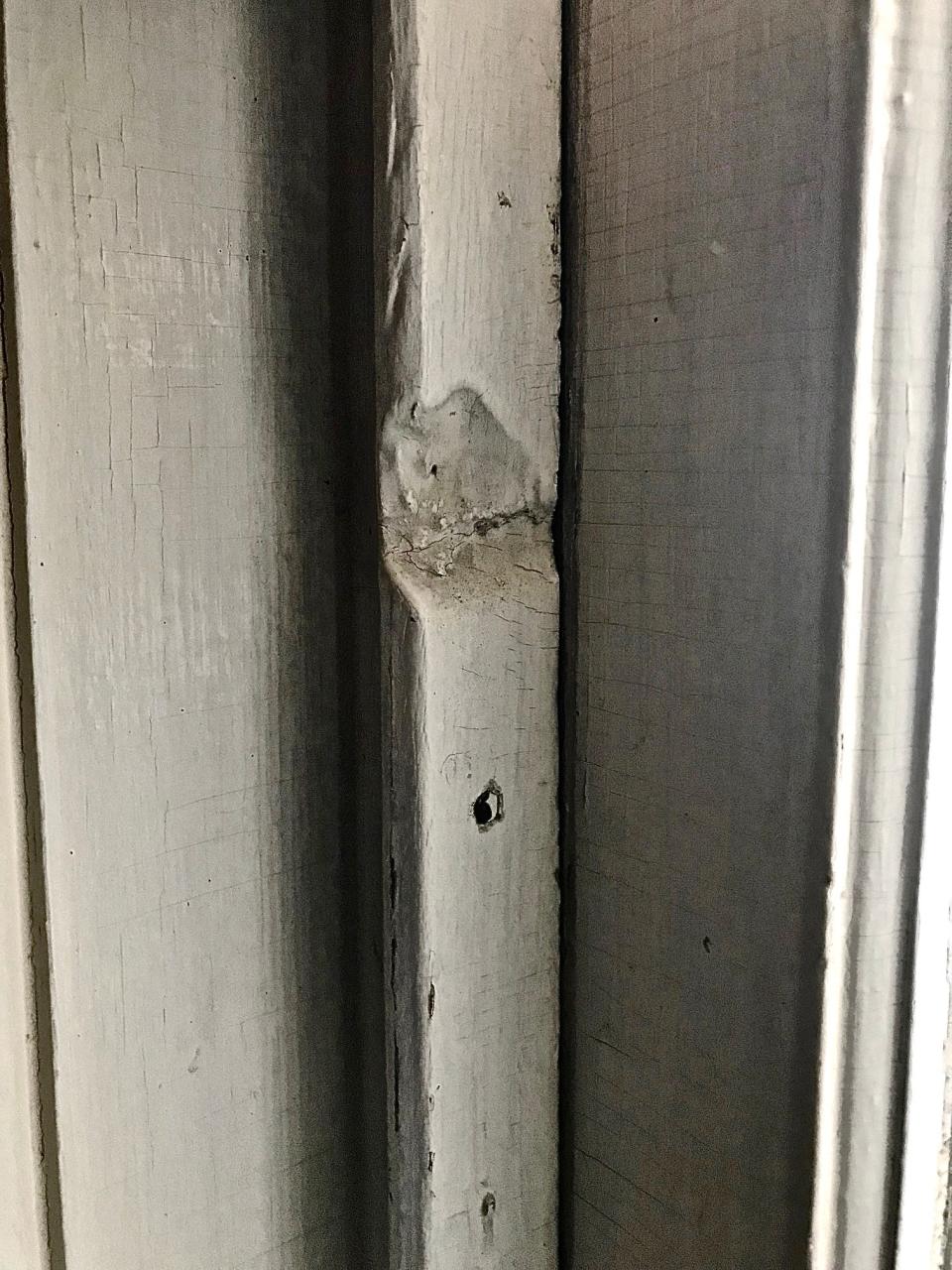This home was in the line of fire in 1862. Preservationists helped it dodge another bullet
SHARPSBURG — For more than 160 years, this south county town's connection with the Civil War has been obvious from every angle.
But one Sharpsburg home displays more battle scars than any other in the vicinity of the Antietam battlefield, locals say, and one prolific local historian says the home has more visible damage from the war than any other building in Maryland.
Its eastern wall is so pockmarked by artillery and small arms damage from the Battle of Antietam, in fact, that he's nicknamed it "the war wounds house."
Thanks to a combination of state and local grants, the town will purchase and preserve the house for posterity, and visitors can see the damage — inside and out — for themselves.
A moment frozen in time
Historian Dennis Frye stands outside the Boyer House on Chapline Street and sweeps his arm toward its damaged wall. "Let's do the orientation first," he says.

"This side of the house where you see the artillery damage, and what looks like to be even some small arms fire damage on the brick, faces due east," Frye says. "It is behind the Confederate main line on what is today Cemetery Hill, and we're about probably 500 yards from that point."
"Overshots" from Union artillery firing at the Confederate line likely caused the damage. "They're not aiming at this building; they can't even see this building," Frye notes.
"During the Civil War, if you couldn't see it with artillery, you didn't fire at it. So these are overshots — these are accidental shells that are missing their mark … because Cemetery Hill has such a concentration of Confederate artillery, there's a whole lot of shells flying through the air that are coming into the town."
And because there was, and still is, an empty lot beside the house, there was nothing to shield it from the onslaught. So it took the brunt of the fusillade for the neighborhood.
"This house became a literal backstop for artillery," Frye says. "Right next door is an 18th-century stone house (with) no damage, no damage at all.
"And the fascinating thing about it is the original owners … didn't fix it," Frye says. "Most of the property in Sharpsburg had some damage from the battery. Many buildings were damaged. But people fixed their properties. These people kept their house as a living museum, as a living testimony to Sept. 17, 1862. They did that intentionally."

They did plug the holes to keep the weather out, and a portion of the roof likely had to be rebuilt. But the family left much of the damage visible.
"There's no other structure in the state of Maryland that shows war damage from the Civil War, more extensive war damage, than the war wounds house; not a single structure in the state," Frye insists. "There's not a structure on the battlefield that has this much damage that's visible."
Pointing out the largest scar in the wall, he says "keep that one in mind" before going inside.
Preservation started at home
William Gloss purchased the property at 111 E. Chapline St. in 1831, and the house might have been built in the 1830s. It was around at least by 1845, when his son Joseph Gloss etched his initials into a brick on the same wall. Joseph's daughter Daisy, born in the 1890s, married grocer Elmer Boyer and remained in the house. And their daughter Kathleen lived in the house until her death last year.
And according to Sharpsburg Vice Mayor Jacob Martz, Kathleen saved everything.
No surprise there — the family had been saving everything for a long time — including even the interior damage to the banister in the the home's original stairway.
The family pieced the handrail back together — but just enough to make it functional while preserving the evidence of damage.

In the attic, parts of the joists are missing as the family opted to repair the damage by adding braces to hold up the roof rather than replace the joists destroyed by artillery fragments.
So much was preserved, in fact, that Frye and Martz can trace the trajectory of the artillery shell through the wall and into the stairwell.
Preservation ran in the family. When the Dunker Church, famously photographed by Matthew Gardner in the aftermath of the battle, was destroyed by a storm in 1921, Elmer Boyer purchased and salvaged the remnants. When the church was restored in 1962, the National Park Service purchased these materials and used as much as possible in the project.
But Frye and Martz believe Elmer kept some of the bricks, and a few of them ended up in the repaired walls of the house on Chapline Street.
And the house itself isn't the only thing that was preserved. Boyer and her family were keeping a treasure trove of early Sharpsburg history in the documents they saved over the decades, which are now being given to the Sharpsburgh Museum of History at the town hall.
Looking back: New Sharpsburg Heritage Museum opens Saturday
"We found documents for this attic that were just stored in cardboard boxes, books going back to the 1700s, correspondence with the county commissioners from the 1870s," Martz said. "I mean, it was just amazing."
Dodging a bullet, if you will
After Kathleen Boyer died, the house with all its preserved history was initially sold to investors who planned to remodel and sell it, Frye said.
"And this was very concerning, not because the flippers were bad people, but because for them to be able to do anything, they had to make a lot of improvements on the house, a lot of improvements," Frye said. "And any improvement to this house would potentially damage the historic integrity, and the Civil War specificity of the house."
"They told me they were gonna gut the house," Martz added.

Enter the Save Historic Antietam Foundation, formed in the mid-1980s to help preserve properties connected to the battle.
SHAF negotiated a deal to purchase the home from the investors at its assessed value, Frye said.
The investors "were very, very top quality folks to negotiate with, because they recognized the history of the house, they appreciated the story of the family that owned this house for generations," Frye said. "And they also could see with their own eyes that extensive efforts had been made to preserve Sept. 17, 1862," in the house.
"We got here just in the nick of time," Frye said, and had cash reserves available to make the purchase.
Frye, a founding SHAF member, noted that the organization never intends to own a property, but to acquire it long enough to ensure its preservation. Now, SHAF is selling it to the town of Sharpsburg at cost.
Frye, Martz and Sharpsburg Mayor Russ Weaver recently appeared before the Washington County Commissioners to request a grant from the hotel rental tax fund to purchase and preserve the house. The commissioners approved a $99,000 grant toward the $154,000 total cost for the project. Sharpsburg will provide $15,000, SHAF provided another $15,000 and $20,000 came from a county surplus funding grant.
The first step, Martz told The Herald-Mail, "was to get it into our possession so that it could be preserved and stabilized." Preservation Maryland has done an engineering assessment, he said, but a long-term plan is still to be developed.
But ultimately, the plan is to open the house to visitors, whether local or from other places, so they can see for themselves how the bloodiest day in American history impacted the place one family simply called home.
This article originally appeared on The Herald-Mail: Preservationists protect Sharpsburg 'War Wounds House'

